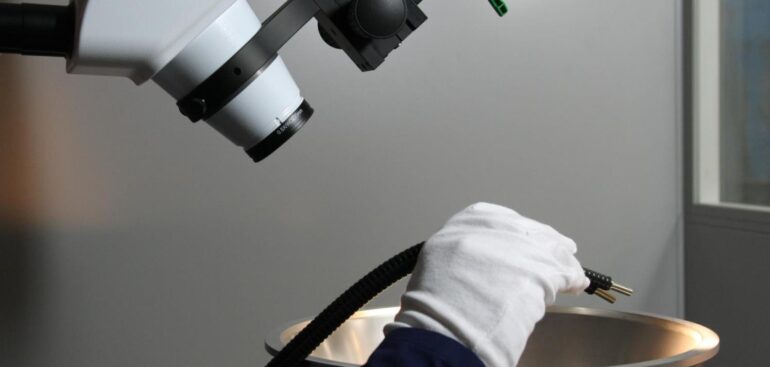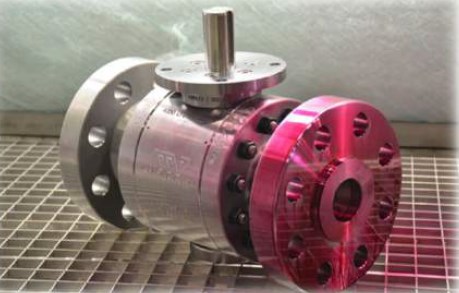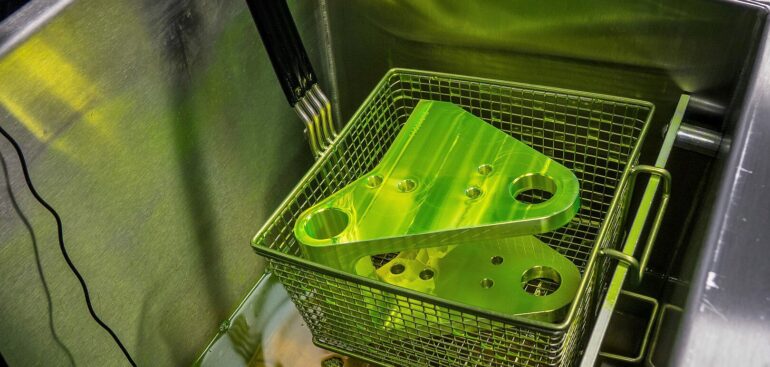Penetrant Colour and Fluorescence
The colour of the penetrant material is of obvious importance in a visible dye penetrant inspection, as the dye must provide good contrast against the developer or part being inspected. Remember from the earlier discussion of contrast sensitivity that generally the higher the contrast, the easier objects are to see. The dye used in visible dye penetrant is usually vibrant red but other colours can be purchased for special applications.
When fluorescent materials are involved, the effect of colour and fluorescence is not so straightforward. LPI materials fluoresce because they contain one or more dyes that absorb electromagnetic radiation over a particular wavelength and the absorption of photons leads to changes in the electronic configuration of the molecules. Since the molecules are not stable at this higher energy state, they almost immediately re-emit the energy. There is some energy loss in the process, and this causes photons to be re-emitted at a slightly longer wavelength that is in the visible range. The radiation absorption and emission could take place a number of times until the desired colour and brightness is achieved. Two different fluorescent colours can be mixed to interact by a mechanism called cascading. The emission of visible light by this process involves one dye absorbing ultraviolet radiation to emit a band of radiation that makes a second dye glow. Since the human eye is the most used sensing device, most penetrants are designed to fluoresce as close as possible to the eyes’ peak response.
Penetrant Brightness
Fluorescent brightness was erroneously once thought to be the controlling factor with respect to flaw detection sensitivity. Measurements have been made to evaluate the intrinsic brightness of virtually all commercially available penetrants and they all have about the same brightness. Intrinsic brightness values are determined for thick liquid films, but the dimensional threshold of fluorescence is a more important property. The measurement of fluorescent brightness is detailed in ASTM E-1135, “Standard Test Method for Comparing the Brightness of Fluorescent Penetrants.”










